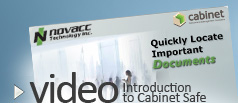The plausibility of the paperless office
With paper probably too ingrained in business culture to ever disappear completely, but the case for removing paper from many business procedures irrefutable, I concluded that the answer to the question myth or reality is – a mixture of both.
The fact is there are many departments where becoming paperless is not only possible, but overwhelmingly advantageous – last week CORDIS (the European Commission’s Community Research and Development Information Service) reported, “From transport to media, tourism to energy, digital technologies are infiltrating and changing almost every industry sector.”
However, it’s not always easy persuading customers, suppliers, even partners to supply the documents you need in the format you want.
An article in online Business IT, Still not paperless after all these years, states, “Far from going paperless, we are actually accelerating in our use of paper with the annual growth rate of the amount of paper produced by the average company standing at 25%.”
With a document management solution paper documents can be captured from anywhere in the business and OCR (optical character recognition) technology used to extract essential data for onward processing.
Eliminating paper removes the need for the manual activities associated with a process – physically progressing a document from desk to desk, department to department – and with electronic workflow alerts can be set and escalation processes defined to ensure that deadlines are met.
It’s easy and fast to pinpoint the position of an electronic document in a process, and automated checks can be set to ensure that steps are actioned in sequence and approval rules followed. At the end of a process, a paperless document can be passed on automatically to a further procedure, such as a finance application, or safely and swiftly archived – without the need for bulky, space-devouring filing cabinets.
The benefits of paperless processing stack up quickly: lower costs (according to the Association for Information and Image Management AIIM it can cost up to $120 to track down a misfiled document, for example), and enhanced efficiency, visibility and control.
And as already written, processing is going digital across industry, markets and services.
Software provider Billentis reports that e-invoicing is on the rise in Europe and the UK government is committed to promoting e–invoicing as detailed in Electronic Invoicing – the next steps towards digital government.
The NHS has a target of being paperless by 2018; the Criminal Justice System is committed to criminal courts operating digitally by 2016; the DVLA (Driver and Vehicle Licensing Agency) is determined to be a ‘digital champion’; Mark Dearnley, the Chief Digital and Information Officer for HMRC (HM Revenue and Customs) has declared that HMRC will “become a fully accessible digital business.”
Director of resources UK Policing Matthew Bennion-Pedley referred to ‘anitquated, Dickensian’ paper-based transactions being replaced by online processing for firearms licensing.
And while not strictly an office, the National Archives wanted to make the records for over 12,000 members of the Household Cavalry serving from the Battle of Waterloo to the First World War available to anyone, anywhere at any time. The solution? Put them online – not only possible, but overwhelmingly beneficial for everyone.









